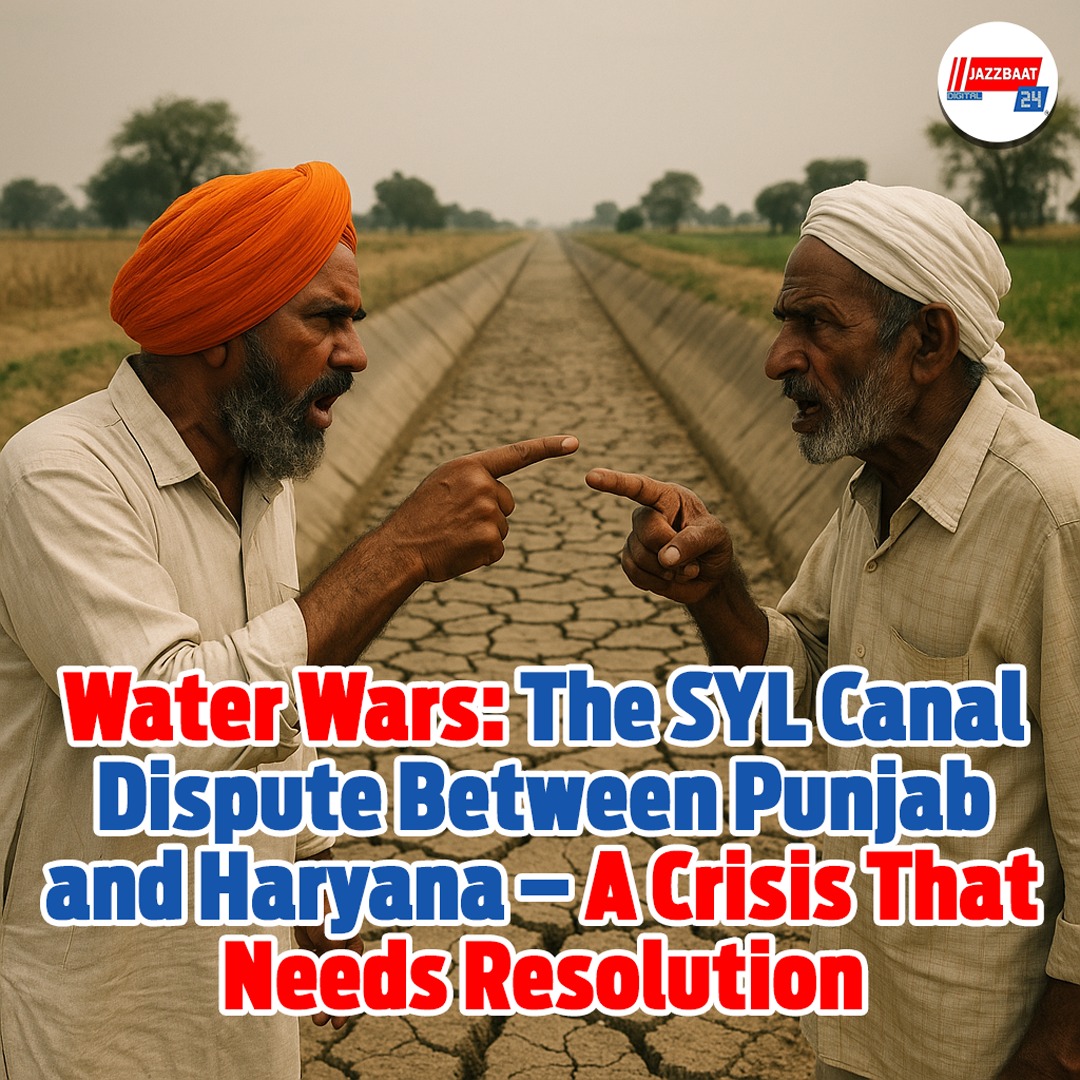
Water is not only a natural resource – it is the elixir of life, economic stability, and regional peace. In India, where rivers nourish agriculture, livelihoods, and cultures, water-sharing disputes have more often than not become long-drawn political and legal battles. The most controversial among them is the Sutlej-Yamuna Link (SYL) Canal dispute among neighboring states Punjab and Haryana. Years have gone by since the matter first arose, yet even after a series of court judgments, reports presented by committees, and political promises, a permanent solution remains elusive. As water shortage is escalating in the entire region, it goes without saying that the necessity to reach an end to this dispute cannot be exaggerated.
Genesis of the Dispute
Genesis of the SYL Canal controversy traces its origins back to reorganization of the state of Punjab in 1966 when the state of Haryana was established. Since then, Haryana demanded an allotment of waters of the Punjab rivers, and more specifically, the Sutlej River to drive its own agricultural development. In 1976, a notification was issued by the central government transferring 3.5 million acre-feet (MAF) of water to Haryana. In order to facilitate this transfer, the SYL Canal was conceived to connect the Sutlej River in Punjab with the Yamuna River in Haryana. Although Haryana started and completed its part of the construction immediately, Punjab objected to and eventually stopped the construction.
Punjab's Perspective
Punjab's resistance to the SYL Canal is well rooted in the issue of water scarcity and survival issues of the region. Groundwater levels of the state have witnessed a surprising decline in the past few years. More than 80% of its blocks are classified as "over-exploited" by the Central Ground Water Board. Punjab's agricultural economy, the lifeblood of the farmer community, is facing severe pressure, and any additional diversion of water can ruin its already strained agricultural economy. Punjab leaders have replied that there is no excess water to spare and that fulfilling the earlier agreements would jeopardize the future of the state's agriculture. Additionally, the problem touches on the pride and identity of Punjabis, and the majority of citizens regard the canal as a symbol of historical injustice.
Haryana's Position
At the same time, Haryana asserts that it is being unfairly deprived of its rightful share of river waters, in disregard of cogent directives from the Supreme Court of India. The southern and central parts of the state experience acute water shortages, particularly the dry season. Haryana argues that the treaty was legally binding and that the failure of Punjab to finish the canal is an insult to federalism and constitutional rule. The state government has lodged a number of appeals with the Union Government and judiciary, seeking that the project be completed and implemented concurrently.
Judicial and Political Deadlocks
The Indian Supreme Court has been caught in the middle of this war, time and again directing the Punjab government to go back to work on the SYL Canal and honor the water-sharing pact. In 2004, the Punjab Assembly enacted the Punjab Termination of Agreements Act, which nullified all the water-sharing pacts with the surrounding provinces, one of which was Haryana. The Supreme Court struck down this bill on grounds of unconstitutional nature in 2016. Both of these judgments have shown no movement on the ground with political apprehension and fear of public resistance.
Political parties within the states have also employed the cause as a political issue in polls, making high promises and fulfilling little. As much as every attempt at brokering peace on water rights is greeted by mass-level demonstrations in Punjab, politicians in Haryana just go on demanding implementation but are halted by legal and logistical issues. The canal still remains incomplete, and the issue continues to bubble with episodic outbursts being utilized to fuel inter-state rivalries.
The Human and Environmental Cost
Besides law and politics, the citizens of the two states and the farmers bear the cost of the real price of SYL. In Punjab, unabated use of groundwater is causing an environmental disaster. Farmers in all districts of Haryana are unable to plough their fields because of a water shortage. This long-term gridlock is also harming the cooperative federal structure envisioned by the Constitution, corroding trust in states and the Centre.
A Call for Cooperative Solution
With the complexity of the issue, a one-sided or coercive solution will not bring long-term peace. What is urgently needed is a new negotiation conducted by an impartial intermediary—presumably a reformed interstate water court—with full involvement of all the parties. Scientific estimates of present supply of water, ecological conditions, and anticipated future demand must guide decisions and not history alone.
The federal government, also, needs to become proactive—not just as a court-compliance enforcer, but as a facilitator to a fair and sustainable solution. Water-sharing mechanisms need to adapt to changing conditions, such as climate change, altered monsoons, and population increases. Punjab and Haryana need to rise above short-term political dividends and collaborate towards a solution that provides water security to all.
Conclusion
The SYL Canal controversy is not merely a matter of water—it is a matter of trust, federalism, and leadership responsibility. While tensions escalate further, inaction is not possible anymore. Punjab and Haryana need to transcend politics and engage in frank, reality-based discussions. Solving this dispute can serve as a model for all the water-sharing disputes all over India, proving that cooperation and common sense can triumph over years of division. For water must be a source of life—not a source of war.